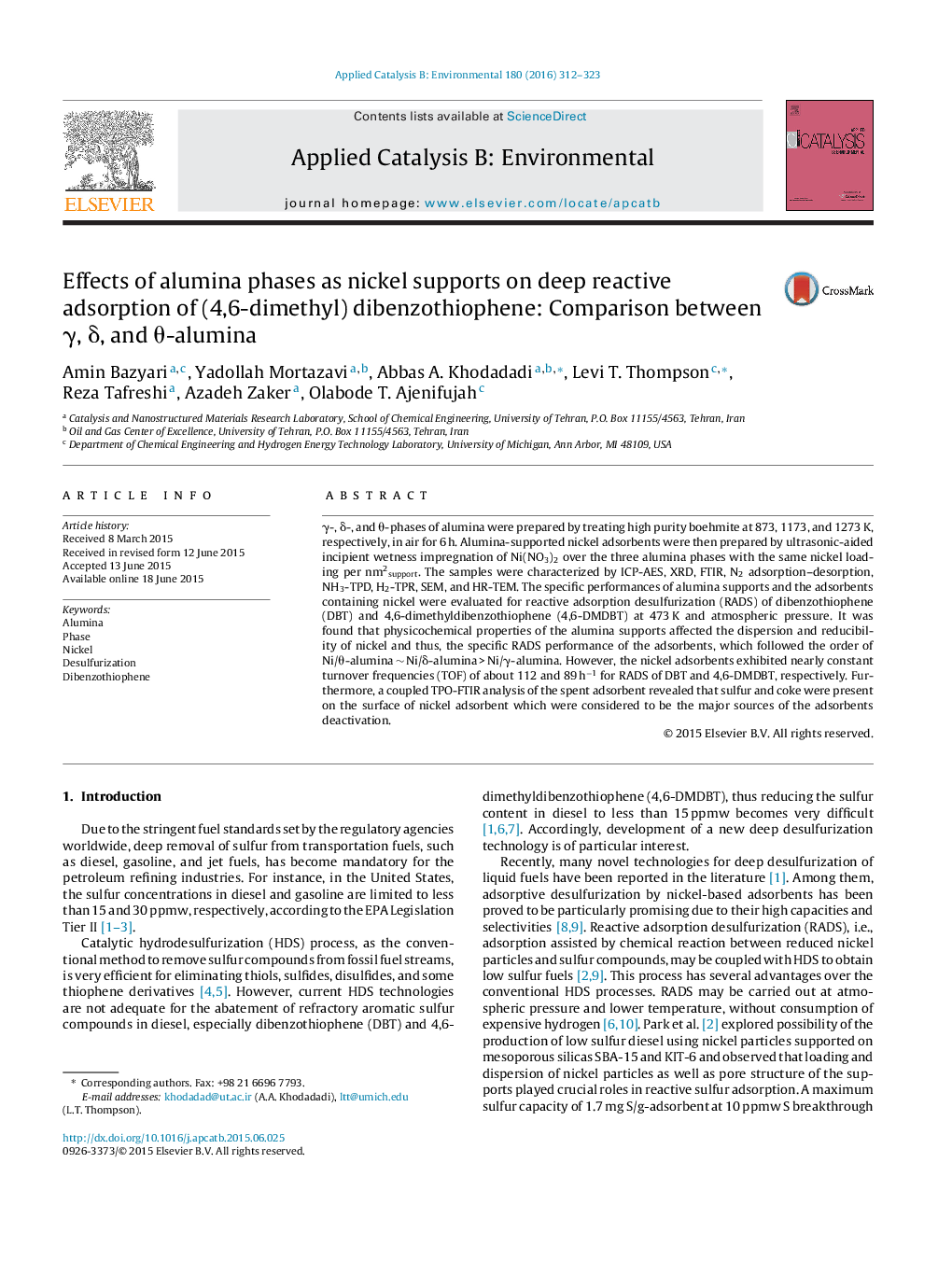| Article ID | Journal | Published Year | Pages | File Type |
|---|---|---|---|---|
| 45247 | Applied Catalysis B: Environmental | 2016 | 12 Pages |
•Nickel sorbents were prepared on different phases of alumina.•Acidity and pore size of alumina support affect the desulfurization performance.•Ni on δ- and θ-Al2O3 exhibit higher RADS performance compared to γ-Al2O3.•Two-zone behavior of Ni sorbent is due to passivation by sulfur and coke formation.•More refractory behavior of 4,6-DMDBT compared to DBT is due to methyl groups.
γ-, δ-, and θ-phases of alumina were prepared by treating high purity boehmite at 873, 1173, and 1273 K, respectively, in air for 6 h. Alumina-supported nickel adsorbents were then prepared by ultrasonic-aided incipient wetness impregnation of Ni(NO3)2 over the three alumina phases with the same nickel loading per nm2support. The samples were characterized by ICP-AES, XRD, FTIR, N2 adsorption–desorption, NH3-TPD, H2-TPR, SEM, and HR-TEM. The specific performances of alumina supports and the adsorbents containing nickel were evaluated for reactive adsorption desulfurization (RADS) of dibenzothiophene (DBT) and 4,6-dimethyldibenzothiophene (4,6-DMDBT) at 473 K and atmospheric pressure. It was found that physicochemical properties of the alumina supports affected the dispersion and reducibility of nickel and thus, the specific RADS performance of the adsorbents, which followed the order of Ni/θ-alumina ∼ Ni/δ-alumina > Ni/γ-alumina. However, the nickel adsorbents exhibited nearly constant turnover frequencies (TOF) of about 112 and 89 h−1 for RADS of DBT and 4,6-DMDBT, respectively. Furthermore, a coupled TPO-FTIR analysis of the spent adsorbent revealed that sulfur and coke were present on the surface of nickel adsorbent which were considered to be the major sources of the adsorbents deactivation.
Graphical abstractFigure optionsDownload full-size imageDownload as PowerPoint slide
